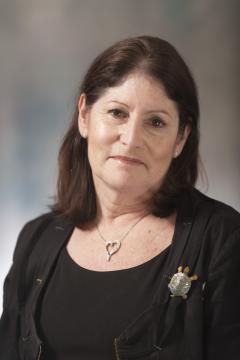
Rochelle Newman
Hearing and Speech Sciences
University of Maryland
rnewman1@umd.edu
website

Nan Bernstein Ratner
Hearing and Speech Sciences
University of Maryland
nratner@umd.edu

|
Rochelle Newman Hearing and Speech Sciences University of Maryland rnewman1@umd.edu website |

|
Nan Bernstein Ratner Hearing and Speech Sciences University of Maryland nratner@umd.edu |
| Participants: | 121 |
| Type of Study: | longitudinal |
| Location: | Maryland |
| Media type: | audio |
| DOI: | doi:10.21415/T5QW3P |
Newman, R. S., Rowe, M. L., & Bernstein Ratner, N. (2016). Input and uptake at 7 months predicts toddler vocabulary: the role of child-directed speech and infant processing skills in language development. Journal of Child Language, 43(5), 1158-1173.
In accordance with TalkBank rules, any use of data from this corpus must be accompanied by the above reference.
Full description of original research questions, participants and procedures for data collection are available in Newman et al. (2015). The major objective of this longitudinal study was to study both infant perceptual and executive function skills (e.g., speech segmentation, statistical learning) and maternal input to the same set of children, followed from 7 months to 24 months of age, and to see whether these factors predicted children’s early language skills, either separately, or in combination.
One hundred and twenty-one mother–child dyads participated with multiple visits across a two-year span; the majority were seen at 7, 10, 11 and 24 months; approximately half were also seen at 18 months. One hundred and seventy-three families were initially tested, but twenty-eight were excluded prior to one year of age because of family move or request for removal; genetic disorder or health issues or only the father being free to participate. Data from an additional ten participants were removed either because the child was not learning English as the majority language at some point during the study (some children began hearing English the majority of the time but their language exposure changed over the course of the study) or because the mother was not a native speaker of English. Finally, an additional fourteen children were later excluded because they failed to attend the final visit or had been identified with a language disorder during their second year, leaving 121 final participants. Mothers averaged 17 years of education (range: HS diploma to PhD.); fathers had 17 years. Ethnicity was 79% Caucasian, 12% AfricanAmerican, 4% Hispanic, ~2.5% each Asian or Native-American/Pacific Islander. Infant age at first visit was approximately 7 months and approximately 24 months at study end. Numbers of participants vary slightly across analyses as noted, due to sporadic incomplete data. Dyads participated in a range of tasks at multiple ages designed to address a variety of theoretical questions. The segmentation task, age 7 months, was modeled after Jusczyk and Aslin (1995); visual and auditory statistical learning was assessed at 10 and 11 months.
After laboratory tasks, dyads played with a standard set of toys, including plush animals, baby doll with accessories, food-/eating-/ cooking-related items, and board books. Mothers were asked to play with their children as they would normally at home. They were informed that they were being video- and audio-recorded, and asked to wear an Audio-Technica lavalier microphone connected to a Marantz solid-state digital recorder; mothers were told that while our intent was to record the child, they should wear the microphone so that their child would not play with it. Sessions lasted approximately 15 minutes. All recordings were transcribed via sonic CHAT mode using TalkBank utilities. Following the parent-child play session, mothers were also interviewed by a researcher, who attempted to elicit many of the same words used during the play session, so that adult-adult as well as infant-directed speech could be compared. At study end, mothers were debriefed, and provided consent for analysis of their speech.
Information is available about the children’s 24 month language, including results of the MCDI, PPVT, and EVT, as well as elicited language sample.